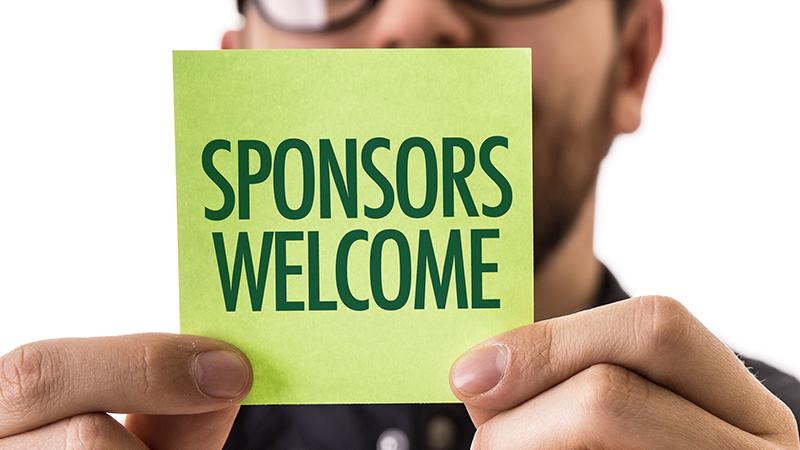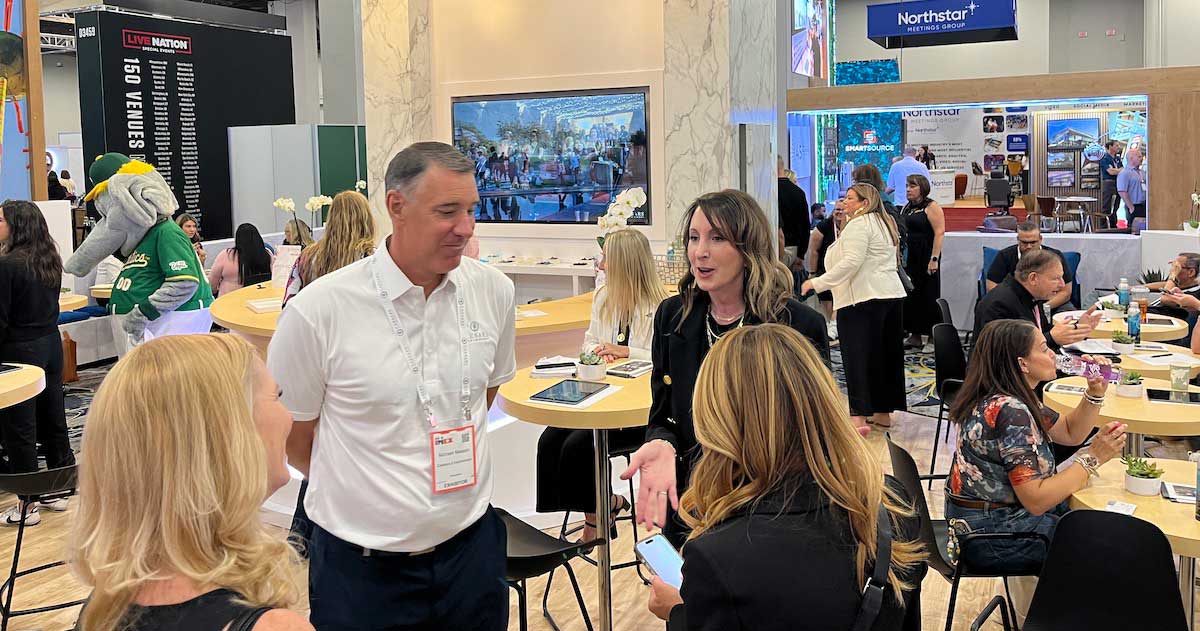The majority of events rely on some form of sponsorship to pay the bills, create attendee experiences and supplement production. But how can planners create events that are sponsor-friendly, collaborate with sales to secure sponsorship and serve sponsors during the event in a way that will bring them back year after year? Before you can execute a great sponsored event, it’s important to remember why sponsors are there to begin with: Sponsorships are an opportunity for brands to generate awareness of their product or service among highly targeted groups.
In many cases, brands will view an event whose subject matter is closely aligned with their business as an opportunity to maintain a dominant position with their core audience. Alternatively, innovative brand managers will also consider sponsoring events outside of their core audience as an opportunity to grow awareness among groups they otherwise have a hard time reaching. Sponsorship types are as varied as event types, not to mention differences in industries and event purposes. The objective here is to look at the areas of event sponsorship that planners can directly impact—no matter the kind of event or industry—and hopefully set the stage for sponsorship success.
Sponsorship Sales
It will come as no surprise that collaboration and alignment are critical to successful events and successful sponsorships. Stakeholder alignment means that as production and sales move forward, everyone is working towards the same goals and objectives. “Alignment is the key to happiness,” says Eve Cohen, owner of Ever Productions, whose events include the Life is Beautiful Festival, Refinery29’s 29Rooms LA and the Link Stryjewski Foundation Bal Masqué. “What’s the event? Who’s the audience? What’s the objective?”
Once the event’s stakeholders are aligned, you can build the right program, sponsorship strategy and team. “I definitely think of sponsorship when I’m building the event,” says Megan Roberts, owner of Long-E Event Productions, which produces corporate conferences, large-scale awards shows and culinary events. “Where can sponsors fit in? Activation areas in a lounge or at an evening event or, even better, can they be integrated into the program in a way that’s even more organic?” Before sponsors can be sold on all of the event opportunities, some planners might have to first sell the sellers. Planners are often reliant on salespeople that are unfamiliar with their event or who are also tasked with selling other types of inventory (such as advertising space). In these cases, planners should add one more step to their process.
“Sometimes the first step is to sell your own salesperson on the event and get them on your side,” Roberts says. “Then after that, the salesperson can sell the event to sponsors.” While drumming up warm leads and pitching the event to sponsors may fall to the sales team, planners can (and should) take an active role in helping to identify the types of sponsors (or categories) whose objectives, products and/or services are in alignment with those of the event. This is also the time when you can look at the event’s needs and identify sponsors that can provide something your budget wouldn’t otherwise allow. Both Roberts and Cohen advocate an active role in sales—or at least a collaborative relationship with the sales team.
“The best, most cohesive plan comes from production and sponsorship working together,” Cohen says. “I’d rather be involved in the sales process to set it up for success.” Roberts has found that sometimes sales is surprised when production wants to be involved. “But I know what we need and what’s possible,” she says. “I’ve been in the situation many times when someone sold something that isn’t possible, then we’re all left to deal with a sponsor whose objectives can’t be achieved.” While planners cannot (and likely don’t want to) be on every sales call and in every sales meeting, there are a few key things planners can do to cultivate a successful sponsorship sales program. “Create an inventory and identify the parameters,” Cohen says. “Give the sales team some ‘bumpers’ so they can go off on their own and sell. I find it’s often helpful to create sponsorship categories, including exclusivities and non-exclusivities. This is important so that everyone is on the same page.” Roberts echos this.
“I’m a part of walking through the event program and identifying what’s sponsorable,” she says. “What are the things that sponsors can actually do that would make sense in the program? I’ll then go through these options with sales and the types of companies that might be interested.” Roberts goes on to say that once a sponsor is interested in the event and is ready to speak in detail about what their activation looks like, she appreciates being brought into the conversation. “A lot of producers probably see this as outside of their purview, and it certainly requires a salesperson who has the judgement and awareness of when to bring me in and whom I trust won’t waste my time,” she says. “But in the end, it makes my job a lot easier when I’m supporting the implementation of the activation.”
Onboarding Sponsors
The sponsor has bought into the event—now what? The transition of the sponsor from the sales team to the production team is where the vision the sponsor was sold becomes reality. “An in-person hand off is a great way to go, but not always possible,” Cohen says. “When that’s the case, do whatever you can to create a positive personal experience for the sponsor. A face-to-face meeting, videoconference or call—this is production’s chance to demonstrate to the sponsor they’ve made a good decision in sponsoring the event.” She advises having an agenda, taking notes and following up afterwards to confirm everyone is on the same page. From there, the frequency of production-sponsor interactions can be determined based on production’s needs and the sponsor’s experience and comfort-level. For example, how confident is the sponsor in the activation? Have they done it before or is it entirely new? The idea is to adapt your process as it makes sense for all involved. (Keep in mind, a one-size-fits-all approach to your sponsors likely won’t work. As with all other aspects of event planning, flexibility and creativity are key.)
Event Sponsor Management
There’s one last recommendation that should be mentioned: Do you have people on your event team dedicated to working with your sponsors? If not, it’s something you should definitely consider. The idea is to have team members that understand the value of (and deliver) good customer service and who also have event production experience. They can then get to know and understand the needs of the sponsor while also understanding the ins and outs of your specific event, thus enabling activations that are in—here’s that word again—alignment. “The producer is dealing with other things,” Cohen says. “If sponsor management falls to the event producer, the sponsor doesn’t always get the attention they need—and deserve.” But what if the event budget doesn’t allow for hiring or dedicating staff to sponsor management? Cohen suggests factoring that cost into the sponsorship budget. She advises two percent to five percent of the sponsorship value be dedicated to serving that sponsor. It’s important from the very beginning to price your sponsorship correctly so that you’re covering these costs—you can’t afford not to.
SIDEBAR: DOLLARS AND SENSE
Eve Cohen, owner of Ever Productions, shares budgeting and sponsor pricing/activation cost best practices for planners.
At the very beginning of the event development process, create three sponsorship budget scenarios: first is ideal, best-case-scenario dollar amount; second is the this-is-what-we-need-to-make-sure-we-have-enough-money-to-produce-this-thing category; and third is your absolute bottom line (the floor). Have all stakeholders sign off on plans A, B and C, ensuring everyone is on board. Then, conduct your regular revenue meetings and compare progress to your agreed-upon goals. “Are we meeting our goals? Do we need to switch plans?” This helps prevent scrambling and helps make sure there are no surprises. You’ll have already discussed it and everyone knows what they’re comfortable with and what to expect.
It’s never easy to leave dollars on the table, but when sponsors overpay for their sponsorship, they often don’t have enough left for their activations—activations that should help them meet their objectives and give your attendees a great experience. This is where having sales and production aligned is critical. Always bring it back to guest experience: Do you want a US$50,000 sponsor that only spends $5,000 on activation? Or do you want a $25,000 sponsor that spends $25,000 on an amazing activation?







